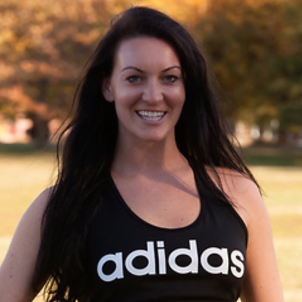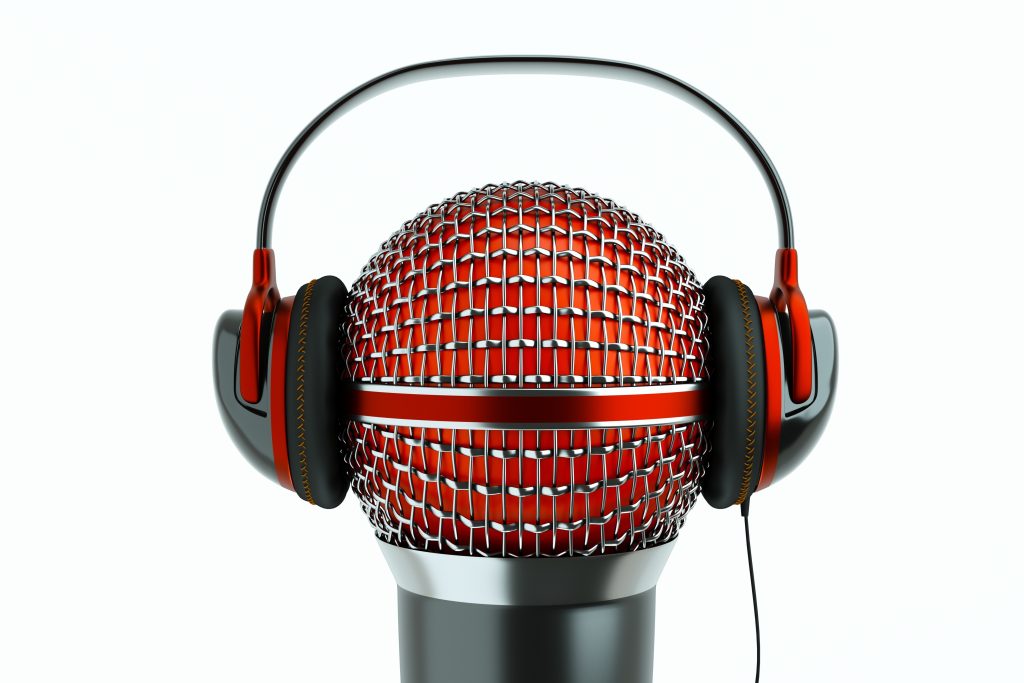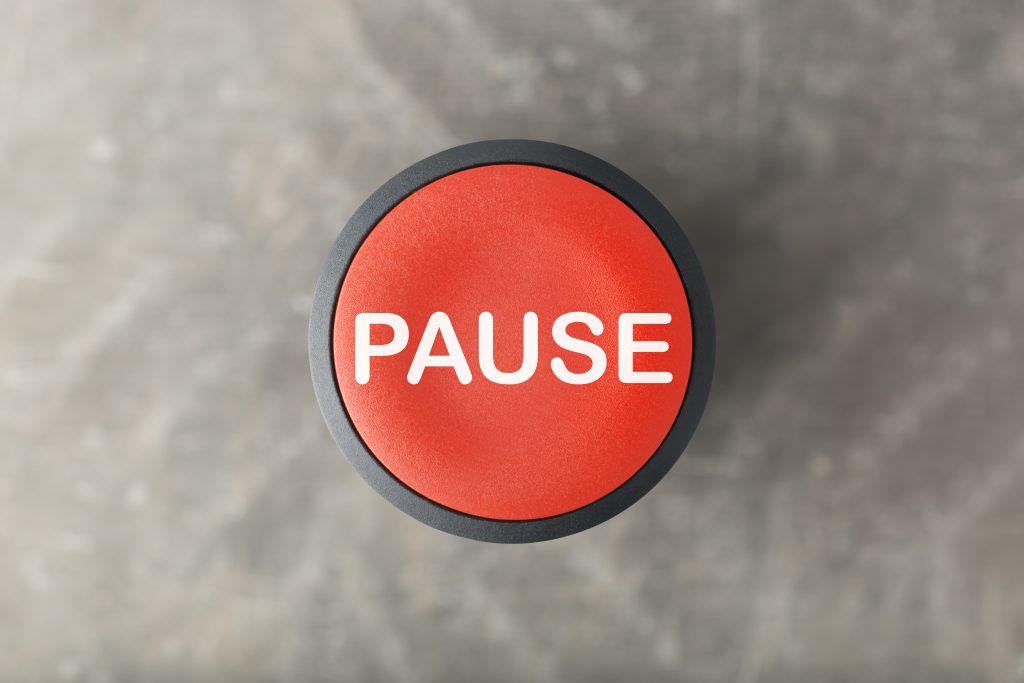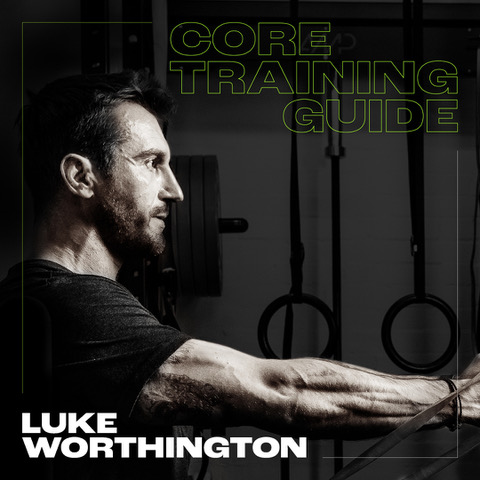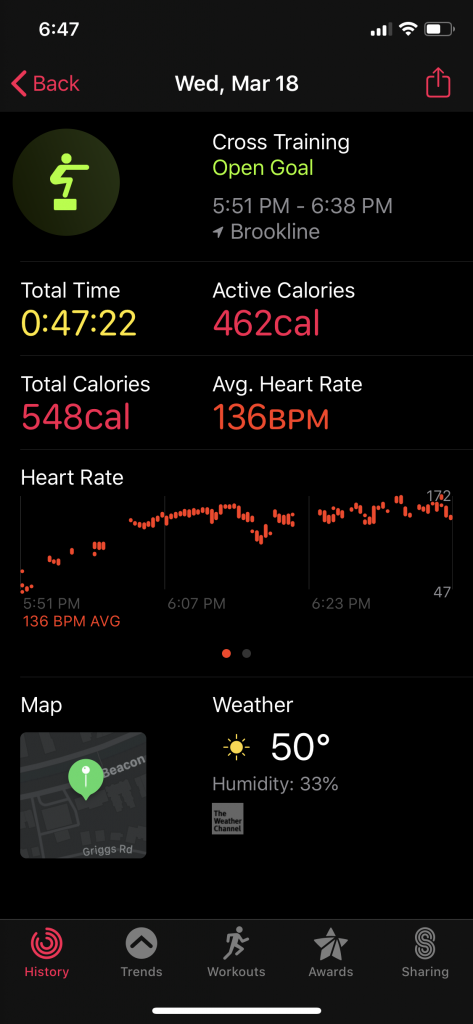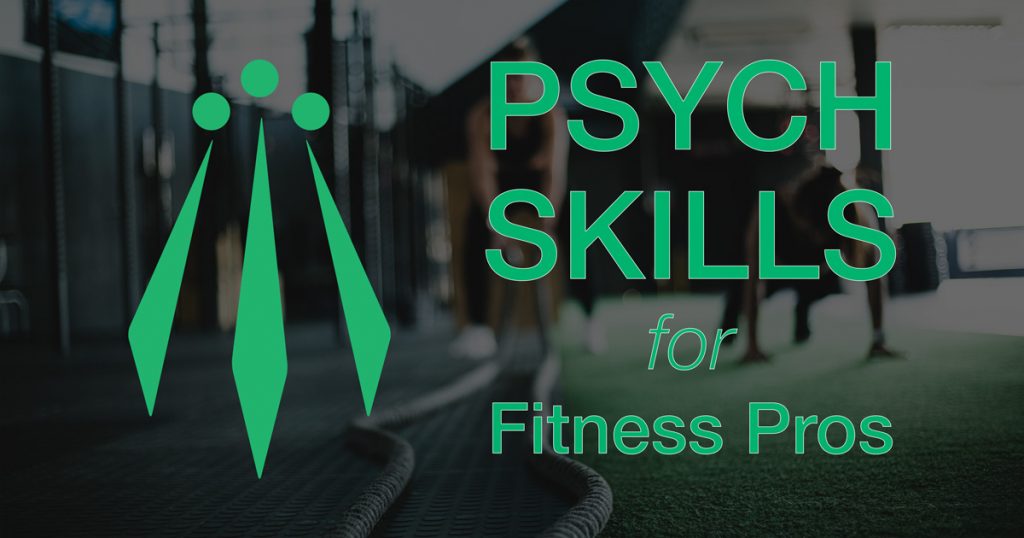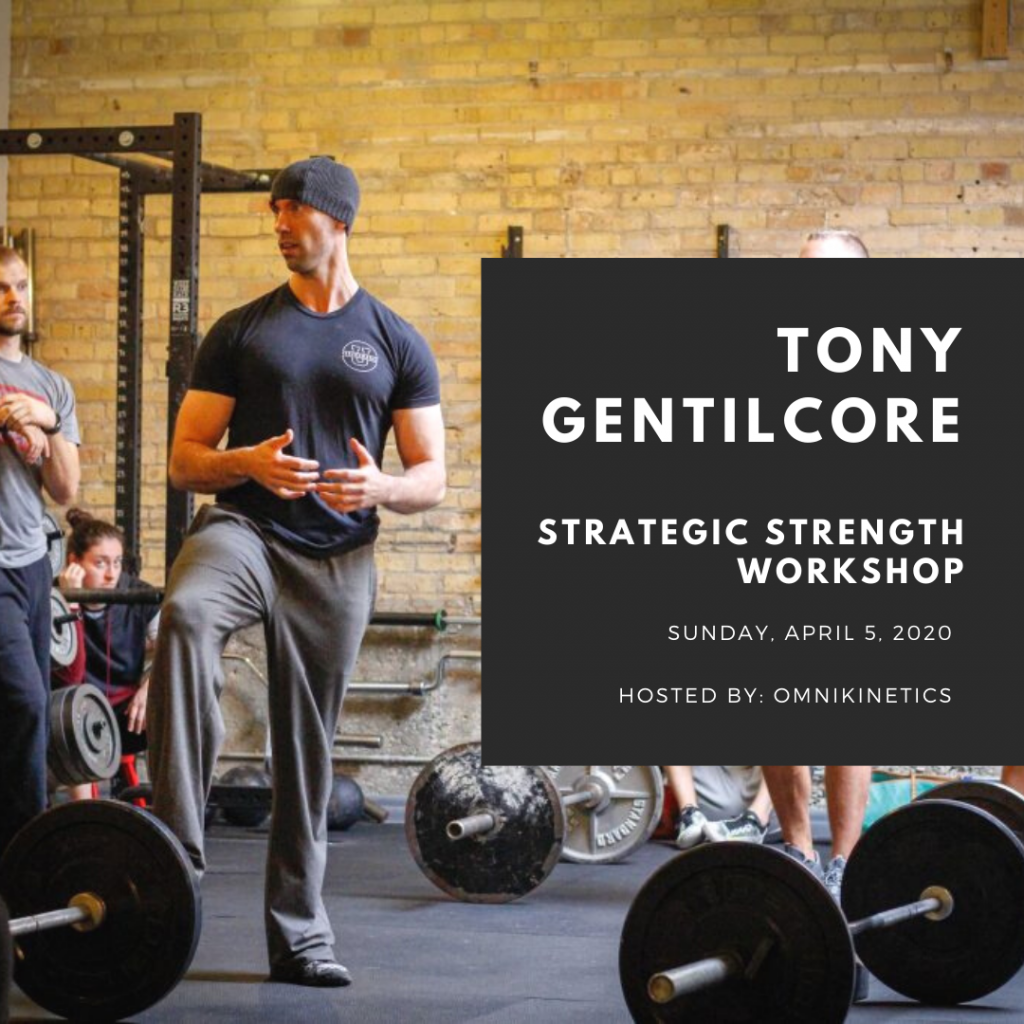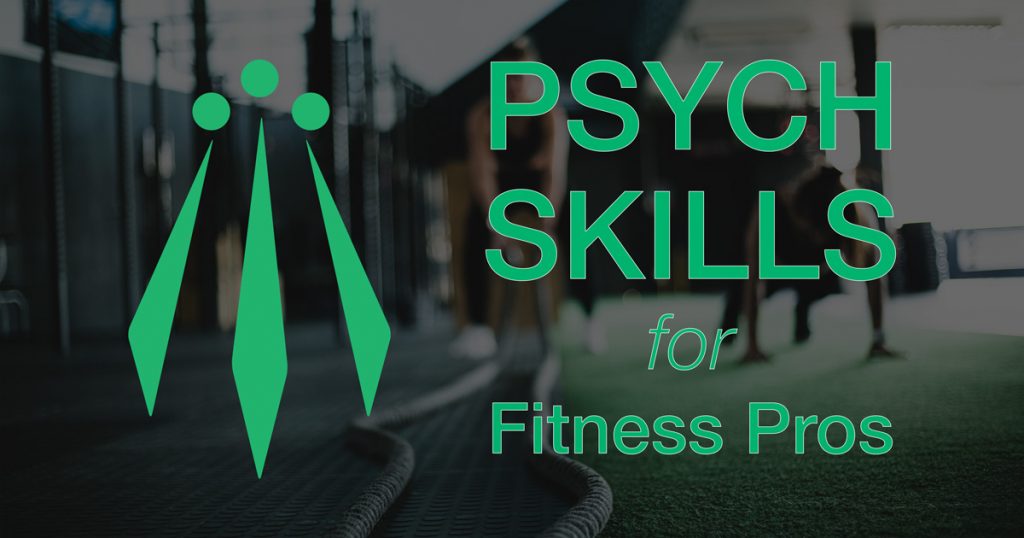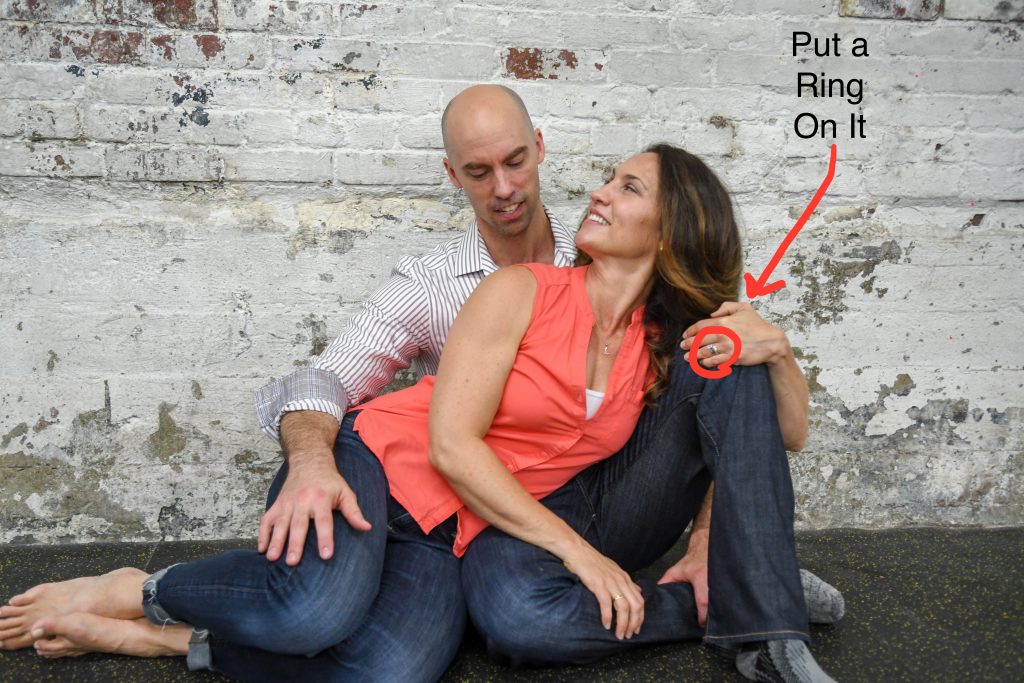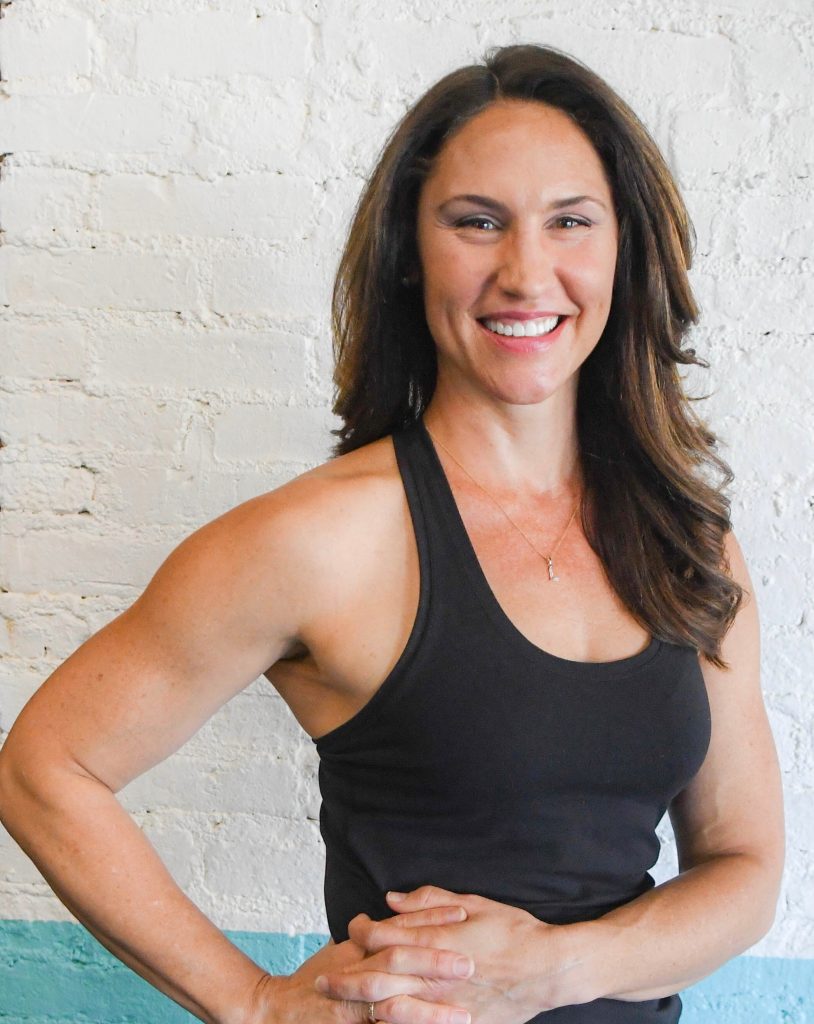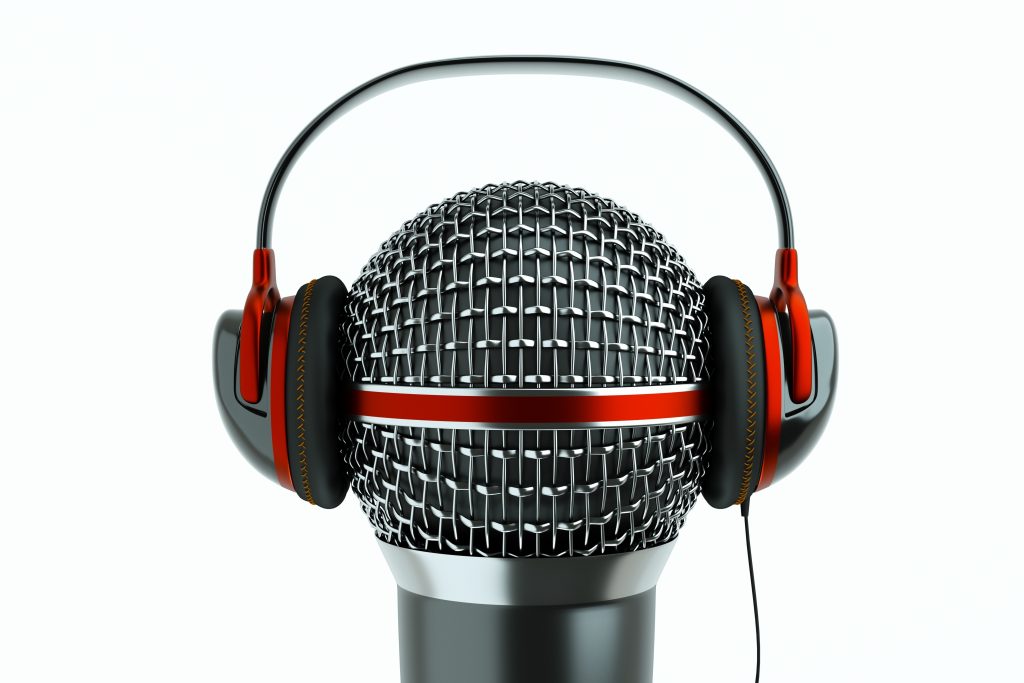Before you go a head and post your 47th bodyweight exercise of the week on IG or send out another free e-book to your followers, give today’s guest post by Jonny Pietrunti and Erica Suter a read.
NO!
Listen to me.
Read it.

What People Need in a Time of Crisis: Leadership
If you are a coach, you need to be leading right now. No one cares about how many fitness stories you are posting on Instagram. And I’m not talking about me not caring…your clients largely don’t need this either.
What people really need now is LEADERSHIP.
I’ve been telling you for years you needed to hone your leadership and you thought learning 7,428 different Dead Bug variations and counting reps was more important than learning motivation theory and actually communicating with human beings outside of sales calls.
You mad? Good. I have your attention.

Also: we have a pandemic.
For better or for worse, I’m still in the wellness industry. Though I’ve largely discontinued diet and exercise programming, I still own a massage therapy and bodywork studio, and I still do a fair amount of mindset coaching.
I’m also a Navy Chief Petty Officer, and that’s something that never leaves you. I was trained to lead through change and crisis, embrace adversity, and run toward fires when others were running away. I was trained to be responsible for my actions and those of the Sailors that were in my charge.
The thing is: even if you train for the worst case scenario, you never really know how you will react when it happens, and even if you have a plan for it, no plan ever survives first contact. That’s the reality of it.
When Coronavirus started to make the rounds – and later kick in the door to crash every party around the globe – I began to notice workouts in my social media feeds. This started off innocently at first, with many gyms and trainers powering through, as we really weren’t sure about the severity of this virus.
But this phenomena grew to the point where everywhere I turned, I was seeing this crap in my feed.
Everywhere. From, EVERYONE.
- Home workout stories.
- Garage workout Facebook Live.
- Push your car workouts.
- Push up “challenges” and “nomination” chain-letters.
And it continues unabated.
I would make a crude virus analogy, but now is not the time or place for that level of nihilistic snark.
This is all very Kubler-Ross.
Between my leadership and psych backgrounds, it seems like a preponderance of people in the fitness industry are stuck in the middle of the Bargaining Stage of grief. The reaching out, the rationalization, the “if only”.
Much of this is a manifestation of fear.
People aren’t crowding onto Instagram to pump out an array of home workouts solely because they think it will be useful.
Granted, I know plenty of trainers that have clients that legitimately need some workouts, but a lot of people are simply panicking because their way of life is completely uprooted. It’s a coping mechanism.
It’s nothing to be ashamed of, but it is something to be AWARE of.
People are terrified and are operating out of fear. You and I are susceptible to this, too. I’m not knocking this or even saying that these feelings of fear are things you should repress or deny. Those of you that are familiar with me or are in my Facebook group know that I hate “toxic positivity”.
The world is not all sunshine, rainbows or unicorns, and if there is at all a reason that your mindset sucks, it’s because gurus are trying to tell you to ignore all of the bad things that are happening…and you are listening.
The majority of people don’t need home workouts right now.
Think about this: there are millions of resources for workouts, for both in gym and at-home settings. There are millions of simple books that anyone could buy if they really wanted to get a decent calisthenics workout.
I was in the military for over a decade, what do you think we did on the grinder? What do you think we reverted to while deployed to austere locations?
I’m not saying this to gloat, but to prove a simple point: people aren’t coming to you as a coach for simple information like bodyweight workouts. Rather, they are coming to you for leadership and the transformation that you provide.
They are coming to you for COACHING, Coach.
Your primary job is to lead. If you are in a panic mode and are unable to step back and provide sound leadership and guidance to your clients, whether through text, skype, zoom, or email, then you have essentially had a major gap in your skillset revealed to you.
I’m not immune to this, either.
This was a time of reckoning for me. My massage studio for athletes is closed until god-knows-when, and when I took stock of my mindset coaching options, I realized that I have middle and high-ticket coaching options for people, but I DON’T have entry-level offerings for mindset and goal setting.
Not even a lousy eBook!

If you are in the business of coaching, training, programming…you are also in the business of leading. Period.
You cannot have one without the other.
If you are training without leadership, you are an overpaid, glorified rep counter.
If you are coaching without leadership, well, that’s actually not possible while simultaneously being effective.
Social media, specifically in the fitness and wellness industries, breeds the exact behavior that ISN’T needed right now.
FitPros, by and large, exhibit a ridiculous amount of attention seeking behavior. This is great for marketing – I mean, you need to have a certain amount of flash and “it” factor in order to stand out from the sea of carbon copies and make a living.
I’d be lying if I said I didn’t enjoy the process of content creation as a marketing tool.
But…
The problem is that this isn’t the time for “Look at Me! Look at Me! Look at Me!”
Now isn’t the time to bask in the limelight of being an “influencer.”
People aren’t going to feel safe and at ease by watching you do a workout.
People don’t need to be giving you attention.
You Need to be Giving THEM Attention
You need to be LISTENING. What are your clients saying? What do they really need? Are you hearing this? It is very easy for us to get caught up in the cacophonies in our own minds during times like these and completely disregard what others are saying.
Pay attention.
Listen.
You need to be EMPATHIZING.
Some people are getting hit with this harder than others. Some have lost jobs. Others have lost loved ones. Do you understand this? Or are you just waiting for the smoke to clear so you can get them back on their normal billing cycle?
You need to be setting an EXAMPLE.
Show people that you are concerned, and that you are taking it seriously. For my part, I have been very candid about the fact that I have certain anxiety about this, and I have been using this as a way to educate followers on the importance of mindset training so that fear does not paralyze you, but rather drives you to positive action.
You need to be LEADING.
Pure and simple.
Some people don’t realize that when they sign on to be a trainer, they are also signing on to be a leader. Hell, leadership was something I didn’t want initially, it just came with the territory of being in the military. But I rose to the occasion. It wasn’t about me. It was about people that depended on me.
It’s time for all of us to rise right now. We don’t have a choice. It’s game time and the stakes are simply too high.
Let’s Get This ‘Free’ Thing Out Of The Way
Hi all, Erica here now.
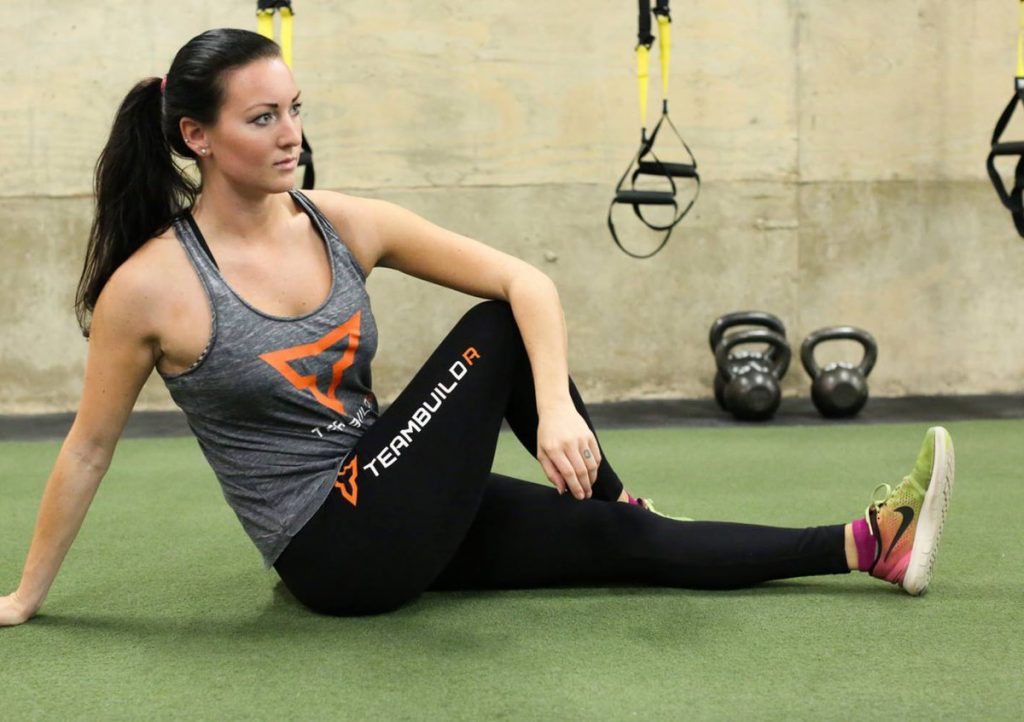
^^ Erica ^^
Thank you, Jonny for opening this piece.
Of course, there were so many mic drops above, that he could’ve just exited stage right, and I could’ve gone home with my take-out pizza and called it a day.
But yo.
He fired me up and I’m ready to light this fire further.
In fact, let it burn.
So.
First and foremost…
Just like New York, it’s bad here in Baltimore, MD.
People are breaking into people’s cars. Ambulance sirens are going off every minute. Helicopters are hovering over my house. Crime rates are rising. Crab cakes are running low.
It’s scary times, no doubt.
The last thing I want to discuss are personal finance and spending more money in the midst of a global crisis.
Oh! And how “free services” are real freaking stupid.
However, I feel it’s necessary to unpack what people need during this time.
To kick things off, in the past week, I’ve seen more fitness influencers offer free workouts and programs than ever before. People who have been quiet in the online space are now suspiciously bubbling to the surface, and screaming, ‘get my FREE bodyweight workout at-home eBook!’
Look. I get it. People are scared out of their minds, offering free stuff with the hopes of retaining (or getting new clients) when this all blows over.
Or, on the other end of the spectrum, they’re financially privileged and are already in a good position to blast out free stuff. It doesn’t harm them to send out free coaching to the masses, as they sit comfortably in their abode, with a glass of wine, their spouse, a wearable blanket, Netflix, and a fully stocked refrigerator.
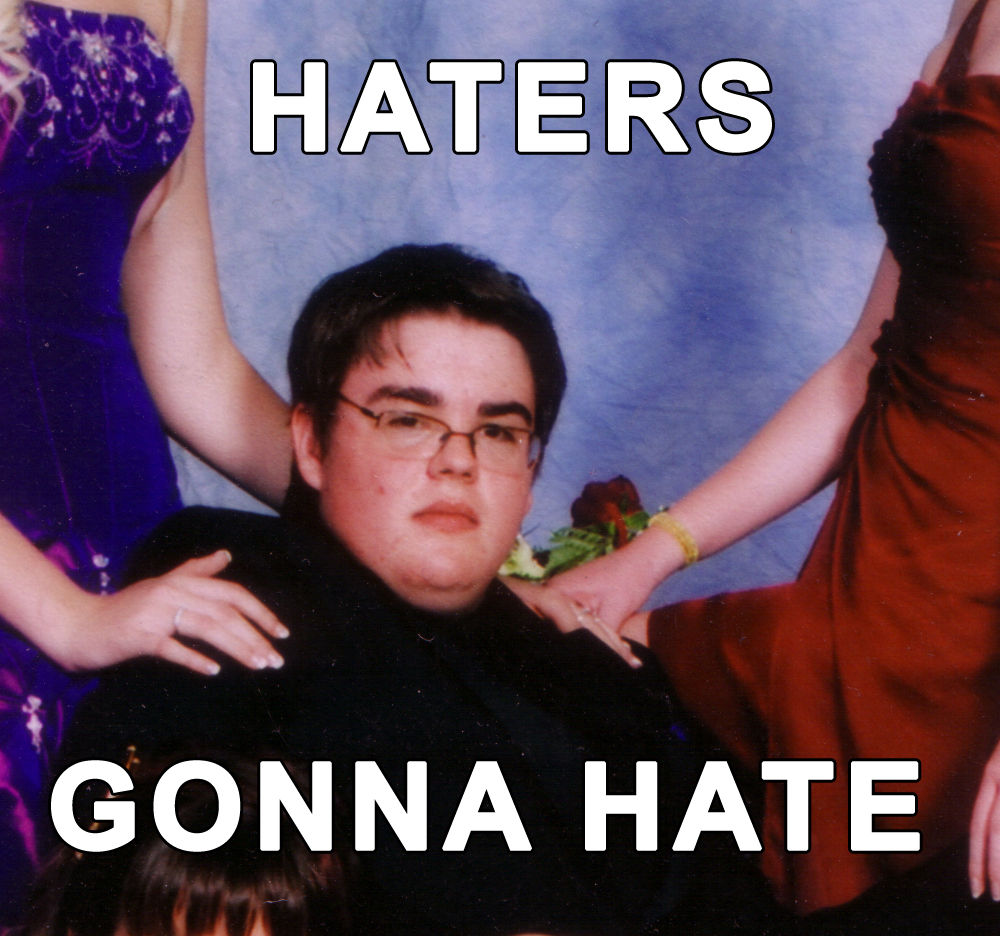
It is what it is.
Whatever the reason – fear or privilege – the fitness industry continues to be infused with people who don’t view themselves as valuable professionals with something high level to offer.
If you’re scared and offering free services, you’re devaluing yourself.
If you’re privileged and offering free services, you’re also devaluing yourself.
OH, And PRIVILEGED WITH NO CONCERN TO PAY BILLS AND FEED YOUR KIDS.
It’s frustrating, to say the least.
Let’s go over this first: I don’t want to be inconsiderate of the handful of people this might be helping now. Your free stuff is benefiting some…maybe.
Chances are, though, if these people are struggling to make ends meet, pay rent, and pay credit card bills, as they homeschool their kids, and argue with their spouse about taking the trash out, the last thing they want to do is your 100 burpee, 100 air squat, 100 push-up free workout.
Instead of taking into account people’s emotional needs, they’re blasting out general, cookie cutter templates.
Moving on…
We’ve All Been Giving Free Stuff for Years, Anyway
This isn’t a novel concept.
At least, I’d hope.
Whether this has been through blogs, podcasts, email newsletters, Tweets or Instagram posts, or continuing education “office hours” we’ve been overdelivering the free content.

And then guess what? If your audience enjoys it, respects you, and wants more access to you as a professional, you tell them about your coaching services.
Not just any coaching, but quality, intensive, detailed coaching.
It’s hard to give this out for free, especially if people want to make it tremendously transformational and life changing.
With that said, I urge fitness professionals to sell away during this time.
For one, selling doesn’t have to be this greasy thing.
Two, selling during times of crisis isn’t out of integrity.
Three, there will always be people appreciative of your expertise and willing to invest in you and themselves.
For the past eight years, I’ve given out so much free content with a smile on my face.

And I’m going to say this right off the bat: I’m incredibly happy that this free content has been life changing for some, especially my most motivating and empowering articles HERE HERE and HERE. And not to mention, creating this content has truly been passion, in-my-flow work that doesn’t take the brain power it takes to solve backwards calculus equations.
To that end, customized programming to the athlete takes an immense amount of brain power. And for me, I’m so incredibly picky with how I coach and write workouts, and want to bring the juice, if not, overdeliver it. It takes energy, man. And admittedly, I lose sleep over it at night.
Too, the people who have seen the most sustainable change, the consistent habits, the daily routines, and the best results, have been my paying coaching clients. For years.
Let me backtrack before the “money is the root of all evil” crowd comes at me.
Last week, I offered a free email campaign to my email list. I sent out two at-home exercises a day from the kindness of my heart. I ran this campaign for 10 days, and initially, I was only going to do it for 5 days.
Not only did it take me 30 minutes to draft these emails in the midst of my most chaotic work schedule of 12+ hour days, it left me with a jarring outcome.
The open rate of my free workouts was immense. A boasting 600 opens.
On the other hand, the click rate on my exercises was disappointing. A meager 15 clicks.
OUT OF 600 OPENS.
That’s Pathetic, to Say the Least
Especially for a woman who truly wanted to provide and service people with some free stuff during a crisis.
The click rate on the free exercises started strong (I guess) with an average of 50 clicks, then 30, then 25, then 20, then 15…
Now this isn’t to discount the folks who actually did my workouts. Shout out to you! You rock. I appreciate you and I’m so proud of you for doing them.
But this begs the question to everyone else, what do the majority of you need during this time to stick to something meaningful? It sure isn’t a library of free workouts.
No.
Right now, humans need leadership and accountability – two things that empower you to stick with something for the long haul, and be inspired to take action on consistently. As Jonny mentioned, you need to feel safe and connected to another human in times of isolation.
And it shows in my private coaching groups. With my in-person and remote athletes, they are committing to a program as a community, with weekly check-ins, training sessions, added resources, personalized teaching videos, mental journaling habits, and accountability from group exercise video uploads.

People thrive on engagement within a community. The lazy, once-a-month check-in, or quick email blast, or free circuit on Facebook LIVE are not going to suffice.
People are in turmoil more than ever before, so high level coaching – from accountability, to motivation, to community, to meticulous programming, to technique teaching, to direction, to done-for-you-outsourced-work, to connection, are all needed.
Good old-fashioned leadership.
Transformational leadership to be exact.
I’m sure some of you are exclaiming now, ‘well no one needs more people selling right now!’
Listen, Bunky, selling is a service.
It’s a service to tell people what gems you will bring into their lives.
It’s a service to tell people how you’re going to help them maintain a routine.
It’s a service to tell people how you’re going to track and measure progress.
It’s a service to tell people how you’re going to weave them into an empowering community.
It’s a service to tell people how amazing you are to hang out with.
Selling. Is. A. Service.
Also, here’s your stimulus package for your crashing economy: PAY YOUR SERVICE PROVIDERS.
And surprise! Training is a service. Coaching is a service. Mentorship is a service. Programming is a service.
Pay.
These.
Professionals.
To take the conversation away from the fitness industry, would you not pay your hair stylist now?
Your accountant?
Your maid?
Your babysitter?
Your gas station?
Your Uber eats delivery man?
I digress…
Why do trainers work for free? It’s unprofessional.
And why do people expect we work for free? It’s disrespectful.
And why does the fitness industry laud that we work for free? It’s degrading.
Now more than ever, I’ve had to adapt so hard to be able to deliver for my athletes. Even in the online space, prices stayed the same, too.
Why would I drop them? Why would I offer for free?
It’s not like I became a bad coach overnight as soon as the apocalypse happened.
It’s not like I lost my Master’s Degree as soon as I went into quarantine.
It’s not like my strength coach certification disappeared as the toilet paper supply ran out.
I’m still the same coach, offering the same service, if not more quality than ever before. Virtual coaching has its way of pushing my creativity, channelling my infectious aurora through, as well as forcing me to sharper and more articulate with verbal cues.
Mind you, it’s a tremendous amount of work to deliver the passion through a glowing screen and ensure your clients feel your energy x one billion.

So it’s business as usual.
And then some…
I’m adding more value, more service, more energy than in person training – from extra Zoom calls, to articles, to private YouTube videos for my paying clients, to guest trainers, to customized training phone apps based on equipment access at home, to technique coaching Google Drive folders, to community with group messages, to mental coaching with accomplishment journals.
Truthfully, I’m happy to do so.
Yes, I go hard as an in-person coach, but I’m going even harder as a virtual coach, doing more than what is expected of me…multiplied times 100. Again, people need connection now, and better yet, personalized coaching videos.
https://www.youtube.com/watch?v=LhlLfbhS6Xo
So I’m pointing at you, trainers, who are offering a free service. I ponder if you are working this much overtime?
I wonder if you are paying for advanced systems?
I wonder if you are writing painstaking, personalized programs?
I wonder if you are working 12+ hour days to go above and beyond for your clients?
I wonder…
Coming back to Jonny’s point, ‘if you are coaching without leadership, well, that’s actually not possible while simultaneously being effective.’
Be a leader.
People need you during this time, Coach.
Sure, some people you train may go through the motions and get by with free workouts thrown together on the web. And some people you train may be going through lay-offs and income cuts. Fine. This article isn’t for them.
This is for people who need connection, accountability, and leadership, and who can afford it, which is most of your clients right now.
In times of chaos, it’s a disservice to yourself and others if you play small and scared.
Play big.
Value yourself.
Rise above the noise.
But more critically, be a leader.
About the Authors
Jonny Pietrunti is a former Navy Chief Petty Officer and the owner of Brooklyn Body Mechanic in Brooklyn, New York. He specializes in massage and bodywork for athletes as well as mindset coaching. He holds a BA in Applied Sport Psychology, is a Certified Strength and Conditioning Specialist (CSCS), and has numerous other letters after his name that no one cares about. In his spare time you can catch him rescuing pitbulls and playing video games.

Erica Suter is a certified strength and conditioning coach in Baltimore, Maryland as well as online for thousands of youth soccer players. She works with kids starting at the elementary level and going all the way up to the college level. She believes in long-term athletic development and the gradual progression of physical training for safe and effective results. She helps youth master the basics of balance, coordination, and stability, then ensures they blossom into powerful, fast and strong athletes when they’re older.
Follow Erica on Twitter and Instagram
